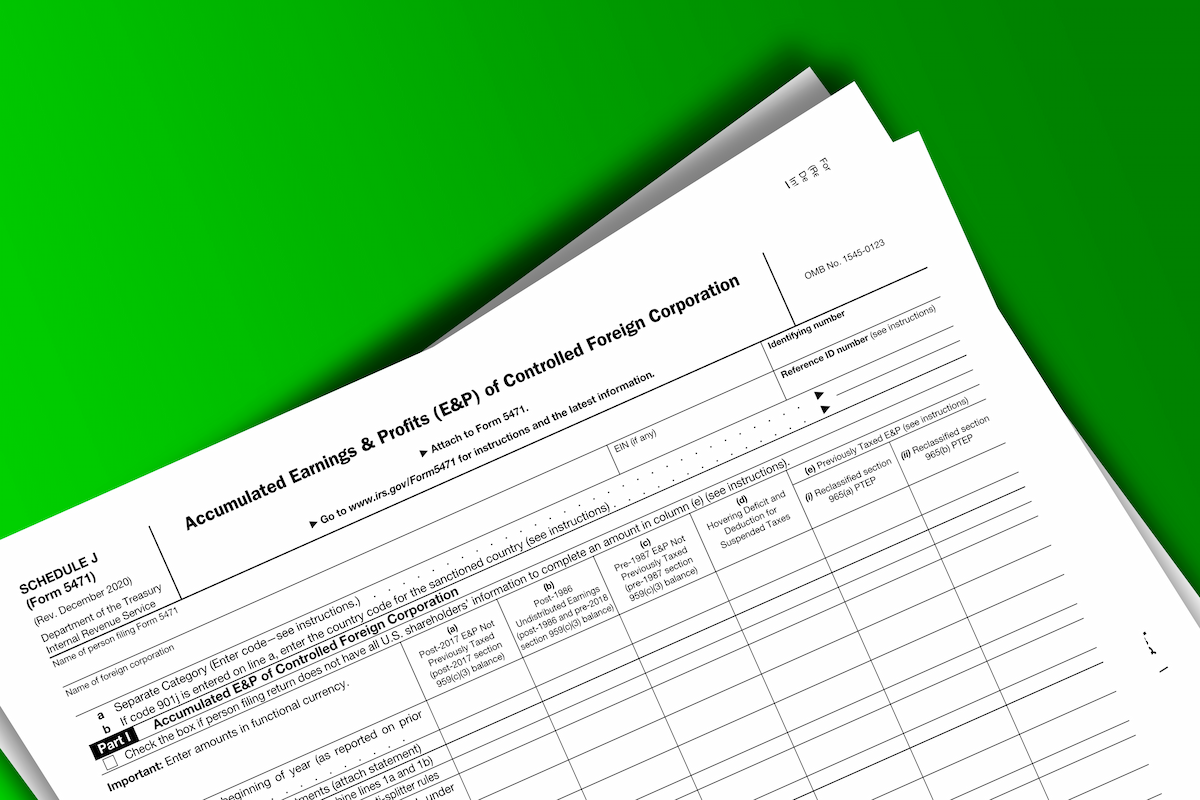If you spend enough time in expat tax forums, someone will eventually warn you about Form 5471 — the U.S. information return for “U.S. persons” who own shares in certain foreign companies. It’s often described as the most painful form you’ve never heard of, and with penalties starting at $10,000, the fear is understandable. But that fear also means a lot of unnecessary filing — and unnecessary fees.
What Form 5471 Actually Is
Form 5471 is an information return, not a tax return.
Its purpose is to give the IRS visibility into foreign corporations controlled by U.S. taxpayers — mainly to enforce rules on Subpart F income and GILTI.
You don’t pay tax on the form itself, but it’s how the IRS knows a company exists, who owns it, and how profits move.
There are several “Categories of Filers” — each with slightly different requirements — and this is where most confusion starts.
Most small shareholders fall into Category 2 or 3, while U.S. owners of Controlled Foreign Corporations (CFCs) fall into Category 4 or 5.
When You Don’t Need to File
Many advisers take a “better safe than sorry” approach and file a 5471 even when it isn’t strictly required.
That’s expensive, and it clogs your return with meaningless data.
The key threshold is 10% ownership of voting shares or value in a foreign corporation — but you only have to file in a year where:
- You acquired that 10% interest,
- You disposed of it, or
- The company became or ceased to be a CFC (i.e., U.S. shareholders collectively own >50%).
So if you own 10% of a foreign company that isn’t a CFC, and nothing changes year to year, you might not have to file at all.
That’s a nuance many tax preparers gloss over.
Controlled Foreign Corporation (CFC) Cases
If the company is a CFC, life gets more complicated.
A CFC is any non-U.S. corporation where U.S. shareholders (each holding at least 10%) collectively own more than 50%.
In those cases, each U.S. shareholder generally files Form 5471 every year, even if the company does no business in the U.S.
The form captures:
- the balance sheet and income statement (in U.S. dollars),
- ownership structure, and
- details on Subpart F or GILTI inclusions (if any).
What the Penalty Threat Really Means
The IRS penalty for not filing is $10,000 per form, per year, and it can snowball if ignored.
But the IRS also recognises “reasonable cause.”
If you didn’t file because you genuinely misunderstood the rules — and you fix it voluntarily — penalties can often be avoided.
In most cases, a well-written explanation attached to a late return does the trick.
Why So Many Advisers Over-File
Some U.S. expat tax firms file 5471s for anyone with a foreign company “just in case.”
That’s a revenue model, not compliance logic.
The rules are complicated, yes — but they’re also specific.
If the ownership percentage or corporate structure doesn’t fit the filing categories, there’s no need to create a phantom compliance burden.
Key Takeaway
Before paying for a Form 5471, ask these questions:
- Do I own 10% or more of a foreign corporation (not a partnership or disregarded entity)?
- Did something change this year — ownership, control, or CFC status?
- Has the preparer shown me which Category of Filer applies to me?
If the answers don’t line up, you may not need the form at all.
Bottom line:
Form 5471 isn’t a trap for everyone with a foreign company — it’s a disclosure tool aimed at controlled corporations.
If nothing changes and your ownership is minor, you can likely skip the stress (and the $500 line-item fee).
Check the categories, understand the intent, and file only when it’s actually required.
Disclaimer: This article is for informational purposes only and isn’t individual tax advice. Always confirm your filing position with a qualified professional.
